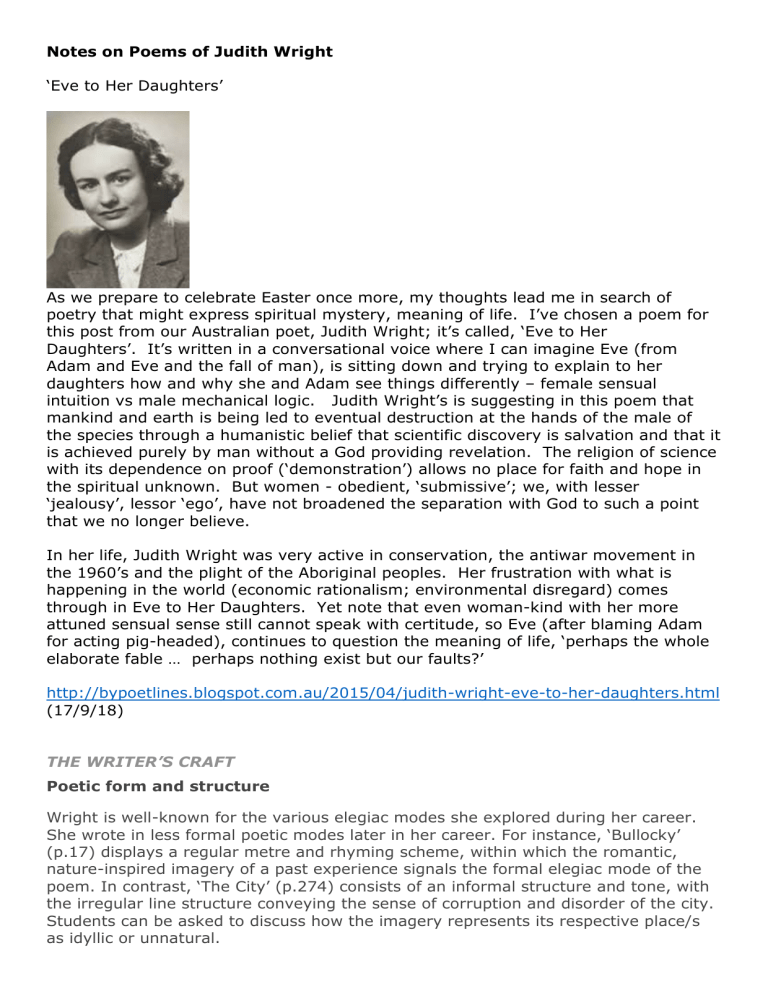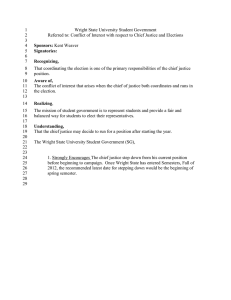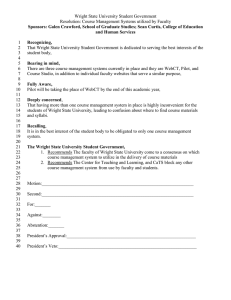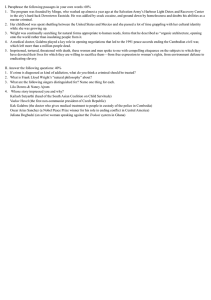
Notes on Poems of Judith Wright ‘Eve to Her Daughters’ As we prepare to celebrate Easter once more, my thoughts lead me in search of poetry that might express spiritual mystery, meaning of life. I’ve chosen a poem for this post from our Australian poet, Judith Wright; it’s called, ‘Eve to Her Daughters’. It’s written in a conversational voice where I can imagine Eve (from Adam and Eve and the fall of man), is sitting down and trying to explain to her daughters how and why she and Adam see things differently – female sensual intuition vs male mechanical logic. Judith Wright’s is suggesting in this poem that mankind and earth is being led to eventual destruction at the hands of the male of the species through a humanistic belief that scientific discovery is salvation and that it is achieved purely by man without a God providing revelation. The religion of science with its dependence on proof (‘demonstration’) allows no place for faith and hope in the spiritual unknown. But women - obedient, ‘submissive’; we, with lesser ‘jealousy’, lessor ‘ego’, have not broadened the separation with God to such a point that we no longer believe. In her life, Judith Wright was very active in conservation, the antiwar movement in the 1960’s and the plight of the Aboriginal peoples. Her frustration with what is happening in the world (economic rationalism; environmental disregard) comes through in Eve to Her Daughters. Yet note that even woman-kind with her more attuned sensual sense still cannot speak with certitude, so Eve (after blaming Adam for acting pig-headed), continues to question the meaning of life, ‘perhaps the whole elaborate fable … perhaps nothing exist but our faults?’ http://bypoetlines.blogspot.com.au/2015/04/judith-wright-eve-to-her-daughters.html (17/9/18) THE WRITER’S CRAFT Poetic form and structure Wright is well-known for the various elegiac modes she explored during her career. She wrote in less formal poetic modes later in her career. For instance, ‘Bullocky’ (p.17) displays a regular metre and rhyming scheme, within which the romantic, nature-inspired imagery of a past experience signals the formal elegiac mode of the poem. In contrast, ‘The City’ (p.274) consists of an informal structure and tone, with the irregular line structure conveying the sense of corruption and disorder of the city. Students can be asked to discuss how the imagery represents its respective place/s as idyllic or unnatural. Rhyme and sound devices – alliteration, consonance, assonance, onomatopoeia The mournful and meditative effects achieved by long vowel sounds can be demonstrated with ‘At Cooloolah’ (p.140), with phrases such as ‘Cooloolah’s twilight’, ‘heir of lake and evening’ and ‘time past’. End rhymes/half-rhymes/alliteration emphasise the consideration of violent events and unfathomable loss that are the themes of the poem; for example, ‘wars/fears’, ‘ghost/past’, ‘spear/fear’. Persona/voice Wright often assumed a third-person omniscient (wise and authoritative) persona, as in the poems ‘Metho Drinker’ (p.50) and ‘Bullocky’ (p.17). Yet the persona she used could, at times, be playful (‘Magpies’, p.169) or satirical (‘Brief Notes on Canberra’, p.351). In ‘Woman’s Song’ (p.27) and ‘Woman to Child’ (p.28), the voice of the poem conveys the intense intimacy that befits a mother speaking to the child in her womb. In these poems, as in others, she addresses the subject of the poem directly and so conveys the intimacy of dialogue. Consider the responses elicited from the intimacy established in the first lines of ‘Woman’s Song’: ‘O move in me, my darling/for now the sun must rise;/the sun that will draw open/the lids upon your eyes’. Imagery Wright is famous for her use of rich nature imagery. This not only includes detailed, poetic descriptions of places and creatures, but also the way she often personifies the landscape to suggest the natural connection between humankind and the natural world. Consider the following lines, for example, from ‘South of my Days’ (p.20): ‘. . . part of my blood’s country,/rises that tableland, high delicate outline/of bony slopes wincing under the winter’. Allusion Wright often uses biblical, classical and literary allusions. In ‘Bullocky’ (p.17), for instance, consider the effect of biblical allusions in creating a mythic land/mind-scape that the bullocky inhabits with ‘fiends and angels’. Students can be guided to consider what this representation of the itinerant worker might suggest about Wright’s values and beliefs, and how this representation of a lost world is contiguous with the biblical notion of ‘The Fall’ . Use of parallels and contrasts This technique is nicely demonstrated in ‘Two Dreamtimes’ (p.315), by the way that the poem traces the similarities and differences between the lives of Judith Wright and fellow activist/poet, Oodgeroo Noonuccal (Kath Walker). Wright asserts that the love of the land that she and Oodgeroo share make them ‘shadow sisters’, while acknowledging, ‘I am born of the conquerors, you of the persecuted’. https://readingaustralia.com.au/lesson/wright-collected-poems/ (19/9/17) Ways of reading the text Eco/environmental reading From her earliest writing, Wright is preoccupied with nature and places, but it is useful to trace the forms that preoccupation takes. Wright depicts landscape at ‘close quarters’, repeatedly returning to write about the places where she lived, often in intimate portraits of particular locales or small creatures. In their specificity they often signify wider truths of human and natural existence. The related, more troubling side of Wright’s passion for the natural world is the poetic manifestation of her ecoactivism. While only some of her poems deal directly with the destruction of nature, even the poems less overtly ‘political’ are most certainly eco-poetic in that they poeticise the innate and metaphysical value of the natural world. In the spirit of critical inquiry, students can be asked to consider whether or not they think that Wright over-simplifies the processes of industrial development and environmental conservation. Race readings The profound empathy behind Wright’s depiction of Indigenous Australians has inspired the admiration of many and was evidenced by many friendships Wright held with a number of Indigenous people. However, using the methods of critical reading – reading ‘against the grain of the text – one could argue that some of Wright’s earlier poems on this subject, such as ‘Half-Caste Girl’ (1946, p.19,) tend to infantilise Indigenous experience or sentimentalise/aestheticise their suffering. One might also argue that Wright, in her profound love of nature and the land, tended to ‘Indigenise’ her experience in a way that was unjustified; loving nature does not mean that one’s experience is ‘Indigenous’. Gender readings Judith Wright was writing poetry during a time when Australia was, as has been widely recognised, a discriminatory and sexist place. Yet Wright’s valorising of the ‘natural’ function of both child-bearing and rearing could be described as an ‘essentialist feminist’ perspective – the belief that giving birth to and raising children is inherently empowering. Wright’s own forays into the public sphere, including the act of writing poetry itself, were powerful acts of resistance to patriarchy. In a critical reading, one might consider the ways in which these two modes of Wright’s life could come into conflict. Consider, for example, the following quote from Germain Greer’s The Female Eunuch(1970) in relation to Wright’s poems: ‘A housewife’s work has no results: it simply has to be done again. Bringing up children is not a real occupation, because children come up just the same, brought up or not.’ Class readings Someone from a less privileged existence than Wright’s (she was, after all, a member of the rural land-owning class with a university education) may find some of her depictions of rural life condescending. Rather than the hardship of the bush offering a spiritual or transcendent experience for poor itinerant workers, one might argue instead that they endured lives of unrelieved misery. Such considerations can affect responses to romanticised visions of the Australian pioneer such as that depicted in one of Wright’s early poems, ‘Bullocky’ (p.17), revealing to some extent Wright’s complex class position. Still, it must be remembered that Wright became a committed socialist and this political commitment emerged markedly in later activity. Her later poetry and prose contributions to public discourse led her to be considered a champion of the Left. The eulogies from left-wing publications (World Socialist Web Siteand Green Left Weekly) reveal the high regard the political Left had for Wright’s activism and creative output. Reading through discrete critical ‘lenses’ The following paragraph describes some interesting features of Wright’s career and readers will notice how categories such as gender and race politics are part of an integrated discussion. While it can be a useful critical and intellectual practice to ‘read against the grain’ of a text using critical lenses, such as those above, it is worth remembering that it is artificial to separate the gender/class/race aspects of a text. One of the most obvious facts about Wright’s work is the way that her energised political engagement cannot be separated from her poetic output. From the earliest moments in her career, many of her poems were linked to historical/political events including World War II, the nuclear attacks on Japan, the nuclear threat of the Cold War, the Indigenous Rights movement of the 1960s and the Vietnam War. Arguably, however, it is as if many of these poems didn’t find their optimum moment of reception until the rest of Australian culture ‘caught up’ with some of the key issues of Wright’s social critique some 30 or so years later. This prolonged national and pedagogical engagement with Wright’s work, spanning at least half a century, prompts us to consider the poet A.D. Hope’s reference to Wright as a ‘sybil’ in 1972. While elements of Wright’s poetry have doubtless proved prescient, it is productive to consider A. D. Hope’s famous epithet, particularly in the way that a ‘sybil’ is a term for a specifically female seer or prophet, and implies that her insights are in some sense mystic or even mystically feminine. While Wright wrote many poems that communicate the realm of the personal, the subjective and the individual, it is also clear that much of the energy, insight and virtuosic poeticism of Wright’s poetry come from processes that are keenly intellectual, erudite and analytical. While Hope may not have intended to diminish Wright’s achievement through this act of nomenclature, to represent her insights as somehow instinctual or ‘channelled’ from a divine muse not only implies a degree of sexism, but detracts from the serious knowledge that underpinned her work, including her engagement with Australian literary forebears, British Romantics, and the wealth of classical and biblical allusions that shaped much of her work. It could be claimed that Wright’s work has been the subject of study in a way that might be thought of as opportunistic, only called upon when it serves a particular purpose. Fuller studies of Wright’s complex and diverse body of work, as might customarily be performed for a male writer or artist, have been absent until more recently. EVALUATION OF THE TEXT As representative of Australian culture Judith Wright’s work was introduced to many Australian students in the 1970s and 1980s thanks to her omnipresence in English textbooks and anthologies, particularly through her nature poetry and her poignant lyrics concerning the passing of the patterns and rituals of Australian pastoral life. Few children would have progressed through primary and secondary schooling without reading at least some of her nature poems, such as ‘The Killer’, ‘Hunting Snake’, ‘Trapped Dingo’ or ‘Magpies’ – their combination of rich poeticism and brevity make them perfectly suited to the classroom. The much anthologised early poems ‘Bullocky’ and ‘South of My Days’ are euphonious and elegiac. Inspired by Wright’s childhood as part of a New England farming family, they combine a lament for the end of the old ways of rural existence, with a romantic homage to the authenticity of human experience gained from the pared-back starkness of rural life. With such frequent inclusions in English programs, it is as if Wright – that great lady of Australian poetry – had assumed her preordained place in the English classroom textbook and the Australian Literary Canon, alongside Banjo Patterson’s romantic visions of ‘The Bush’ and Henry Lawson’s lyrical renditions of pioneering hardship. However, the Australia of the 1990s to 2000s saw social changes that led to Wright’s work as a poet-activist come to the fore in a way that problematised the notion of Wright as the suitably apolitical ‘lady’ poet of Australian English, encouraging educators to turn to the thematically dense and conscience-pricking stuff of Wright’s collective body of work. Firstly, the 1993 Mabo decision and other key moments in Indigenous rights brought Wright’s poems of Indigenous dispossession to the fore. With the nation’s growing awareness of the longstanding abuse and exploitation of Indigenous Australians, Wright’s poems such as ‘Bora Ring’, ‘Nigger’s Leap’, ‘New England’, ‘The Ancestors’, ‘At Cooloolah’ and ‘The Dark Ones’ assumed a greater role in high school classrooms. Of particular cultural resonance was Wright’s difficult and painful assessment of her own complex part in Indigenous dispossession, particularly as she uncovered the history of her pioneer-pastoralist forebears. In a connected way, a renewed focus on environmental activism in the face of increasing evidence of global environmental devastation grew in prominence in the first decade of the 2000s, and many of Wright’s poems of nature and place, most of them published at least three decades earlier, emerged and/or re-emerged in the classroom. They remain fresh and topical in their sophisticated eco-philosophy and spatial sensitivity. https://readingaustralia.com.au/lesson/wright-collected-poems/#next (19/9/17)





